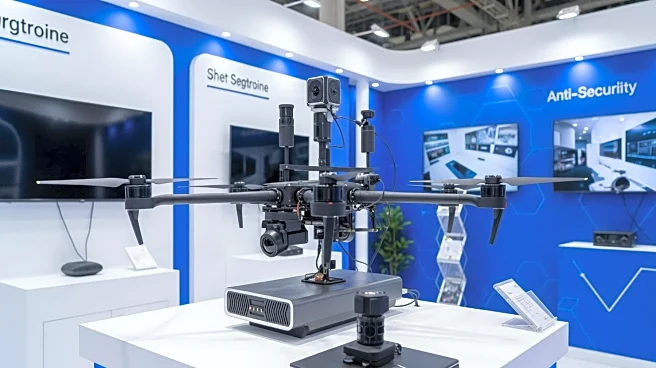What's Happening?
ParaZero Technologies Ltd., an aerospace defense company, is set to showcase its DefendAir counter-drone solutions at the Milipol Paris 2025 event. This exhibition, held from November 18 to 21, 2025, at Paris Nord
Villepinte, is recognized as a leading global platform for homeland security and safety innovations. The event, organized under the patronage of the French Ministry of the Interior, will focus on 'Homeland Security and Artificial Intelligence.' ParaZero will present its DefendAir family of Counter-UAS (C-UAS) products, which are designed for rapid, non-kinetic interception of unauthorized drones. The DefendAir system has demonstrated a 100% interception success rate in field trials. The product line includes a handheld DefendAir Net launcher, a stationary DefendAir turret system with 360-degree autonomous coverage, and a Counter-UAS drone-mounted solution. These systems utilize ParaZero's patented technology, initially developed for autonomous drone parachutes, to provide precise and scalable defenses against aerial threats.
Why It's Important?
The introduction of ParaZero's DefendAir solutions at Milipol Paris 2025 highlights the growing importance of counter-drone technologies in maintaining security in urban, military, and critical infrastructure environments. As drones become more prevalent, the risk of unauthorized aerial intrusions increases, necessitating effective countermeasures. ParaZero's systems, which have already been deployed in high-stakes operations globally, offer a reliable solution to this challenge. The company's recent substantial orders from a major Tier 1 global defense corporation further underscore the effectiveness and demand for these technologies. The focus on non-kinetic interception methods also reflects a shift towards safer and more controlled responses to drone threats, minimizing collateral damage and enhancing public safety.
What's Next?
As ParaZero continues to demonstrate its DefendAir solutions, the company may see increased interest and orders from defense and security agencies worldwide. The success of these systems in field trials and their deployment in critical operations could lead to further advancements and iterations of the technology. Additionally, the emphasis on integrating artificial intelligence into homeland security solutions at Milipol Paris 2025 suggests that future developments may include more autonomous and intelligent counter-drone systems. Stakeholders in the defense and security sectors will likely monitor these advancements closely, considering potential collaborations or investments in similar technologies.












